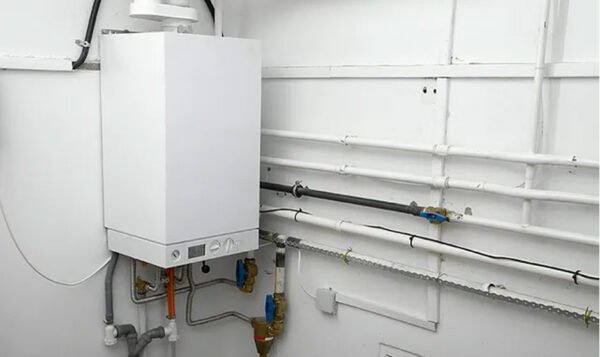Clogged Bathroom Drains? Here Are The 8 Top Reasons Behind It

The disruption of our regular routines is created by a clogged bathroom drain, which is a nuisance. This is a common irritation in a lot of homes. The purpose of this post is to explore the complexities of the main causes of these bothersome drain jams.
It illuminates the several offenders that affect bathroom plumbing. Homeowners may maintain clear drains by being proactive and recognising these underlying issues. This guarantees their bathrooms operate at their best.
1. Hair Buildup
Hair, seemingly innocuous, emerges as a prevalent culprit for bathroom drain clogs. As we wash and groom, loose strands find their way into the drain. This creates a mesh that intertwines with soap, toothpaste, and other substances over time. The amalgamation forms a formidable obstruction, impeding the free flow of water.
To counteract hair buildup, homeowners are advised to employ preventive measures, such as using drain guards. Cultivating the habit of regular cleaning is also crucial. However, when clogs do occur, it’s essential to explore safe and effective methods for removing these hair blockages without causing damage to the plumbing system.
2. Soap Scum Accumulation
Soap, our trusted companion in maintaining personal hygiene, can transform into a foe when it collides with hard water. This collision gives birth to soap scum, a persistent substance that adheres to pipe walls and gradually accumulates debris. The cleaning and prevention of soap scum are critical aspects of drain maintenance.
Homeowners will benefit from discovering various methods to tackle soap scum buildup and understanding why regular maintenance is vital in combatting this tenacious contributor to clogs. Exploring eco-friendly and effective cleaning solutions can enhance the longevity of bathroom plumbing systems.
3. Toothpaste and Personal Care Products
While toothpaste and personal care products contribute to our well-being, they can inadvertently wreak havoc on our drains. These substances have a tendency to adhere to pipe walls, creating a welcoming surface for debris accumulation.
Proper disposal practices and techniques to address the buildup of these substances are essential for ensuring drains remain clear and functional. Homeowners can explore alternative disposal methods and adopt preventative measures to mitigate the impact of toothpaste and personal care product residues on their plumbing systems.
4. Mineral Buildup from Hard Water
Hard water locations can cause minerals to accumulate in your bathroom pipes, which, over time, can cause jams. The first step is to comprehend the effects of hard water and its deposits. We’ll look into ways to control hard water and lessen the harm it does to your plumbing. Find out how descaling and water-softening products can help you fight mineral buildup.
Only with hard water control and mitigation is it possible to avoid losing the use of plumbing systems and increase their durability. Indeed, otherwise, pipes and fittings get retired prematurely or sooner than they are supposed to.
One of the approaches that can be used to ensure reduction in water hardness is the installation of a water softening system which aims at eliminating minerals like calcium and magnesium which cause hard undertakings. Furthermore, mineral deposition and corrosion can be prevented by maintaining the daily lamp cleaning process of showerheads, faucets and other related furniture.
Liquefying likewise may be supported as a descaling option through the application of vinegar or domestic chemical facilitate. The preventive action of installing water filtration systems that can focus on specific chemicals cause the hardness of water forms another mitigating measure.
That’s why hard water is quite heavy on the plumbing infrastructure, but its level of impact can be significantly reduced with common monitoring and quick treatment for all problems it may cause, which ultimately leads to a longer life span and a better running process.
5. Small Objects and Debris
Indeed, accidents cannot be prevented. Small items, such as jewellery or bottle tops, frequently fall into bathroom drains unintentionally. These unannounced incursions may put the plumbing system at risk, possibly resulting in obstructions and abnormalities in the flow of water. Prevention is crucial in order to lessen the impact of such occurrences on your plumbing.
Installing drain guards or coverings can help prevent small things from accidentally getting inside. These serve as barriers, keeping objects from ever falling into the drain. Furthermore, a crucial component of preventing accidents is exercising caution while allowing objects to be close to open drains.
In-depth discussions of numerous methods for removing things that have already made their way down the drain without endangering the plumbing system will be covered in this section. Even though it can be tempting to use do-it-yourself techniques, knowing the right tools and techniques for retrieval can really help.
Homeowners can learn useful tips for efficient retrieval techniques, such as how to use pliers to delicately remove objects or a flexible plumbing snake to get around the pipes’ curves. Furthermore, emphasis will be placed on the significance of acting quickly in the event of an unintentional item entry. Responses that are delayed run the risk of making matters worse and doing more harm.
This section tries to educate householders about the possible risks connected to having unlimited access to drains by emphasising the need to exercise caution near open drains. Youngsters, in particular, could be inquisitive and ignorant of the dangers of sticking stuff down drains. It is also essential that parents and guardians inform their children about the possible risks.
6. Flushing Non-Flushable Items
The toilet, although a crucial fixture, is not a catch-all disposal system. Non-flushable items like wipes and feminine hygiene products often end up causing issues by clogging the plumbing. Common culprits in this category will be identified, shedding light on the impact of flushing them on bathroom plumbing.
Educating household members about proper waste disposal practices becomes essential in preventing these types of clogs. This section will provide actionable insights into fostering a responsible waste disposal culture within the household.
7. Pipe Deterioration and Narrowing
Ageing pipes or corrosion can lead to the narrowing of passageways within the plumbing system, contributing to clogs. Recognising the signs of pipe deterioration is vital for homeowners.
This article will guide readers through the process of inspecting and updating bathroom plumbing to prevent clogs and avoid more significant issues down the line. While some maintenance tasks can be undertaken by homeowners, professional plumber consultation is advisable for major pipe concerns, ensuring a comprehensive and reliable approach to pipe health.
Evaluation and revising bathroom plumbing is necessary to stop the clogging, as well since in some years greater damage can be caused. First, you should look through all the visible pipes to check for corrosion, leaking or any damages. If the drainage is slow in the sinks, tubs and showers, then generally, pipes are blocked, and they are hampered by some other problems.
Check toilet flushing systems are working and no possible leaks from the units. Also, check the seal state placed around fixtures to verify it’s watertight. If you have old pipes or vintage fixtures, think about replacing them with updates that are more modern and effective to lower clog risk. Install drain screens or filters where debris will be depositing to catch the debris and prevent it from jamming in the plumbing system.
Last, please get advice from one of the licensed plumber professional experts to conduct a thorough inspection and make suggestions as to what may need to be repaired or upgraded in order for you never have clogs on your bathroom pipes that may cost a pretty penny down the line.
Below is a concise breakdown encapsulating key points regarding pipe deterioration and narrowing, offering a comprehensive guide to maintaining optimal plumbing health in your bathroom:
- Ageing pipes;
- Corrosion;
- Narrowing of passageways;
- Recognition of signs of pipe deterioration;
- Inspection process for bathroom plumbing;
- Updating plumbing systems;
- Prevention of clogs;
- Avoidance of significant issues;
- Homeowner maintenance tasks;
- Professional plumber consultation for major concerns.
8. Improper Pipe Ventilation
Often overlooked, proper ventilation is an unsung hero in maintaining clear bathroom drains. Inadequate ventilation can result in symptoms that contribute to frequent clogs. This section will explore the importance of ventilation in plumbing systems, share signs indicating poor ventilation, and provide solutions for improvement.
Ventilation plays a crucial role in plumbing engineering as it ensures the right pressure of air and also avoids accumulation of gases that may cause loss Of houses destructions when convulsions are rifled to free such houses from waste water. Some methods to determine bad ventilation in plumbing are seen from smelly, sour odours coming through drains; slow running drain pipes with noisy gurgling sounds or water flowing upwards from the sinks and tubs.
How to improve ventilation, the homeowner has to make sure that all vents were clear of debris or blocks. Choosing to install more vents or even make some longer could boost air flow. Enlarging the diameter of pipes may also help with streamline blockages. Apart from that, the option of AAVs can offer an alternative to the conventional plumbing method during cases where other forms of venting are difficult or impossible.
Effective and convenient ventilation maintenance works could not only ensure the constant performance of underlying systems but also contribute to preventing plumbing losses generated due to poor ventilation.
In cases where ventilation issues persist, professional assistance may be required to address the underlying problems and enhance overall drain function. Homeowners will gain valuable insights into maintaining optimal ventilation for a healthier plumbing system.
Conclusion
In conclusion, clogged bathroom drains can stem from various multifaceted reasons, each requiring a nuanced approach. Armed with knowledge about these diverse culprits, homeowners can proactively conquer these challenges through prevention and maintenance. Timely and well-informed responses to drain issues can prevent more severe plumbing problems, ensuring a hassle-free household. May the insights gained from this article empower homeowners to maintain bathroom drains that flow freely, allowing daily routines to remain undisturbed.



